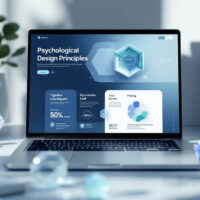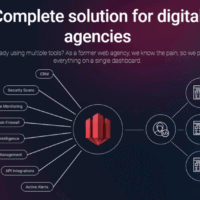What is ‘website usability’ (UX)?
Building a website is more than just hiring a graphic designer with an eye for aesthetically persuasive style, or a web content writer to produce great material. Whilst imagery and content are important, it is also about making it easier and more obvious for people to find their way around your website, to easily and intuitively interact with your material. It is about understanding your audience [See: Advertising Won’t Help If You Don’t Know Who Your Retail Customer Is – June 2018] whilst remaining focused on the ultimate purposes of your website and specific content, through the application of customer-oriented website usability standards throughout.
Website design is all about user experience.
Is your website really customer-oriented? Here are a few simple pointers to help you gauge if your website is up to speed.
Simple Layout
Make sure your web pages don’t look crowded. ‘White space’ is a vital factor in achieving this. (No, ‘white space’ does not actually have to be white!) Place lots of white space between blocks of text and individual elements that do not need to be grouped tightly together. Try to avoid the urge to fill every space with content, an error many people inadvertently make. This is a common area of contention between web/graphic designers and their clients’, but don’t feel bad, as not all designers remember this rule every time either. We will publish future articles on the subject of layout and ‘balance’ in graphic design.
Complicated internet layouts are off-putting because they’re perplexing. On the other hand, a well-thought-out design is easier on the eyes and is simpler for the user to follow.
- Use artistic design to guide individuals towards what is important on a page.
- Use headers (H1, H2, H3, etc.) correctly.
- Use effective and appropriate calls to action (CTAs).
- Adhere to a consistent colour scheme throughout your website.
- Match your writing style to that of your target audience; which is not an excuse to dumb down your content or overuse your thesaurus, keep it simple and to the point.
A good example of white space usage is Mailchimp’s homepage, which tends to make effective use of white space and artistic hierarchy. The website looks clean, the pitch is emboldened, the call to action is well defined, using buttons to focus your attention, and it holds your attention due to the absence of interruptions in the flow of the content.
Artistic Cues
An essential part of website design is about making everything quickly identifiable to users. The use of bullets when you have to enumerate several things, or icons and illustrations that are universally recognised, to steer users in the right direction and align their experience with their expectations. We are all creatures of habit, and no matter how smart you may want to look, sometimes you just need to make sure that users can immediately understand the cues on your website. I am not saying that it is wrong to be creative, but use that creativity in the right measure or make sure your site visitor understands that you have been creative with this aspect of your site.
In addition, ensure that your hyperlinks are visibly classified. Either make use of a different colour for them or embolden/underline all of them consistently. Remember that usability is about considering the needs of all potential users, including the sight impaired, etc. Hyperlinks are an excellent technique for users to discover other content on your web page, so it only is reasonable that you find a method to emphasise all of them.
Accessible Navigation
Your website’s navigation must be obvious and usable, wherever situated within a web page, make it very easy for the user to find and understand, even when they’re scrolling through a long page. This ensures that it is easier for users to move between web pages and find what they need quickly. A well thought out menu is also critical to your SEO strategy, as search engines such as Google use your site menu to learn about your website.
The navigation menu should be as concise as possible, so try not to overcrowd it. If you have a lot of pages or content on your website, use sub-menus to lead the user down a path of discovery of your content, working towards your target call to action. But also try to avoid burying your content, keep your sub-menus to a minimum of two-three levels if at all possible. The basics apart (like the homepage and contact us links), make sure your website menu is well thought-out. If you have a lot of pages, consider creating multiple sub-menus for different pages. As long as you plan properly, this is an easy way to simplify your main menu.
Utilise imagery or icons throughout your website to further act as navigation aids, to entice your users to click through to the content you really want them to see or the call to action (CTA) you want them to follow.
A prime example of a well-thought-out menu is the navigation bar of Apple’s website, which follows you as you scroll down, features links to different and well-defined groups/headings and, due to the amount of content on their site, they also include an assistance page where consumers can get help in finding what they need. All of this is designed to help the user get to where they want to go and make it easier for them to learn about or purchase Apple products.
Responsive Design
Responsive design is one item that is at the heart of user experience. As you think of individuals visiting your site, you also have to take into account the hardware they could be using to get there. The use of smartphones continues to grow globally and are extremely useful for quickly browsing a website or searching for information no matter where you are. In some market sectors, smartphones are already the primary hardware being used by visitors, and it isn’t always along age lines. This trend continues to grow year on year and Google is already effectively downgrading websites, in Google search tools, that do not support mobile responsive design.
Take a look at how Adobe’s website design works equally well for both mobile and desktop users. Sometimes it is not necessary to show the same imagery on a smartphone as a desktop, or headings should be different, to take into account the smaller viewing area on a smartphone screen. It merely requires thoughtful UX planning to get it right.
Website Usability
So, did your website manage to check off all of the essential items above? If the answer was ‘no’, then don’t panic, as all is not lost. But, you should definitely consider making some changes to certain elements within your website, especially if responsive design was one item you said no to and if you want to improve your website visitor/target audience’s experience with your brand and ensure your business aims are being adequately met. Website usability is by no means limited to the items above; there are many other factors to be taken into consideration when genuinely aiming to offer a positive user experience on your website.
If you would like a free, no obligation, website usability review, then please contact Enrapture and we can assist in helping you get your website on track.




















